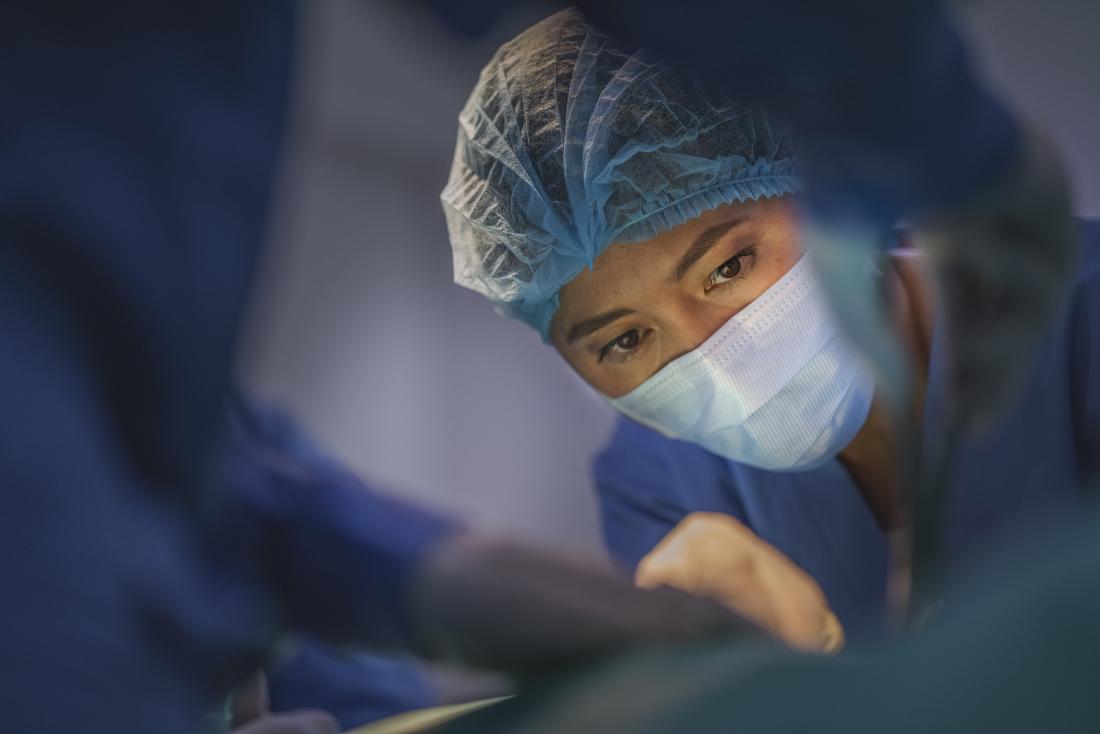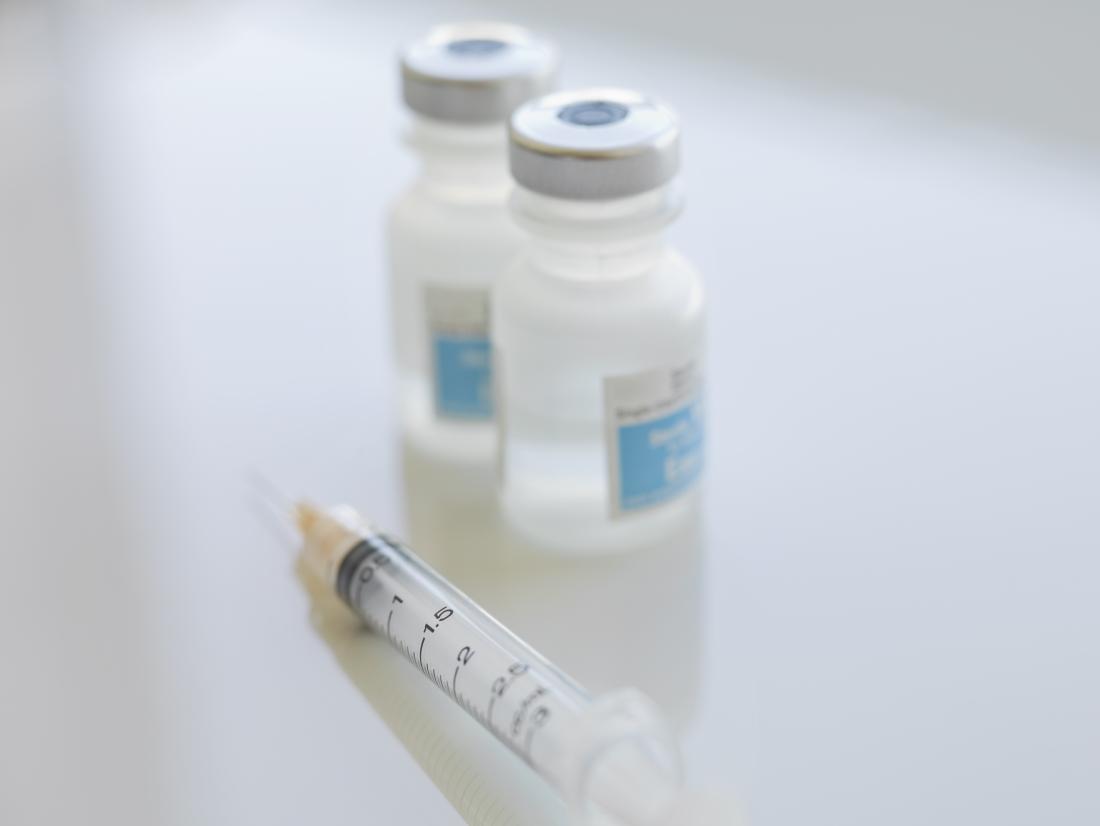The appendix is a small pouch that does not perform any vital functions in the body. However, it is close to the large intestine and is sometimes vulnerable to infection due to the accumulation of stool, bacteria, and other infectious material.
If it does become infected, a doctor will usually recommend removal of the appendix by appendectomy.
When is an appendectomy needed?

An appendectomy is a common treatment for appendicitis.
When the appendix becomes infected, it can cause a painful condition called appendicitis.
Doctors consider appendicitis to be a medical emergency because the appendix can burst, or rupture, allowing the infectious contents to enter the abdominal cavity. Removing the appendix before it ruptures is vital to prevent complications. Surgery to remove the appendix is called appendectomy.
Appendicitis causes abdominal pain, usually in the region of the bellybutton. The pain may also radiate to the lower right section of the abdomen. Additional signs and symptoms that indicate appendicitis include:
If the appendix bursts, it is likely that the individual will also have a high fever and severe pain in the abdominal area.
Surgery is the most common treatment for appendicitis. While a person may take antibiotics to reduce the incidence of infection, doctors will usually recommend that healthy people have an appendectomy to avoid the appendix rupturing at a later date.
Appendectomy procedure
An appendectomy is a common surgical procedure that doctors can usually perform using keyhole surgery, also called laparoscopic surgery. This procedure is less invasive than open surgery.
Surgeons usually perform an appendectomy under general anesthesia. As a result, the person will be completely asleep and unaware that the surgery is taking place.
A laparoscopic appendectomy procedure typically includes the following steps:
- A surgeon makes between one and three small incisions in the abdomen, into which they insert a special tool called a port.
- They pump carbon dioxide through this port to inflate the stomach and make the organs in the abdomen easier to see.
- The surgeon then inserts a lighted camera, called a laparoscope, through one of the incisions.
- They use other instruments to identify, position, and remove the appendix.
- The surgeon removes the appendix through one of the incisions and instills sterile fluid to remove any remaining infectious material.
- The surgeon removes the surgical instruments, which allows the carbon dioxide gas to escape. They then close the incisions with sutures or bandages.
Sometimes, if the surgeon cannot see the appendix well enough or the individual has other health-related issues, it is not possible to complete the surgery using a laparoscope. In these cases, it will be necessary for the surgeon to perform an open appendectomy, which involves making a larger incision.
How to prepare

A medical team may advise avoiding insulin before an appendectomy.
An appendectomy is often an emergency procedure, so there is usually little time to prepare for the surgery.
However, a person will ideally be able to complete some of the following steps before surgery:
- Refrain from eating for at least 8 hours before surgery. Doing this reduces the risk of aspiration, in which the contents of the stomach enter the lungs, and other complications. An empty stomach also makes it easier for the doctor to see the abdominal cavity.
- Avoid taking certain medications before surgery as the medical team advises. For example, some doctors recommend that people avoid taking insulin in the morning because they will not be able to eat before or immediately after surgery.
A doctor may also provide a person with additional instructions on how to prepare.
Recovery time
After surgery, recovery time varies depending on the severity of the infection and whether or not the appendix ruptured.
According to the American College of Surgeons, if the appendix did not rupture, a person may usually go home after 1 or 2 days in the hospital.
A person will need to stay for longer at the hospital if their appendix has ruptured. Here, they will receive powerful antibiotics and remain under observation for any signs of complications.
People should avoid driving, drinking alcohol, and operating machinery for up to 2 days after surgery. They should also refrain from making important decisions because the anesthetic can make it difficult to think clearly for a couple of days.
A doctor will talk to the individual about activity restrictions and expected recovery time. Activity restrictions will typically apply for up to 14 days after the appendectomy.
Most children can return to school within 1 week of the surgery if their appendix did not rupture and within 2 weeks if it did.
Recovery tips
As they awake from surgery, a person will feel groggy and may have trouble thinking clearly. They should notify a healthcare professional if they feel nauseated or in pain.
After some time in the recovery unit, the person will be able to go home or to a hospital room. At this time, they can start drinking small sips of clear liquids. They should not advance their diet to solid foods until they are sure that their body can tolerate clear liquids.
Before a person goes home, their doctor will usually give them some tips for improving their recovery and reducing the risk of infection.
Tips for aiding recovery after an appendectomy include:
- Refraining from lifting any objects heavier than 10 pounds for 3–5 days following laparoscopic surgery or 10–14 days after open surgery.
- Washing the hands thoroughly with warm water and soap before touching the area close to an incision site.
- Following the medical team’s instructions regarding bathing. Most surgeons will recommend refraining from showering until at least the second day after surgery.
- Checking the bandages for signs of infection, which can include thick, strong-smelling drainage or redness and pain at the incision site.
- Refraining from wearing tight clothing that could rub against the incision sites and cause discomfort.
- Using pain relievers as necessary to minimize discomfort. Narcotic pain medications can cause constipation. As a result, a doctor may prescribe a stool softener and recommend an increased water intake to reduce the likelihood of a bowel obstruction.
- Holding a pillow over the stomach and applying firm pressure before coughing or moving to minimize strain on the incision sites. This practice is known as splinting.
A person should notify their doctor if they experience any of the following during their recovery. These symptoms could indicate complications:
- fever higher than 101°F
- not passing gas or stool for 3 days
- pain that persists or gets worse
- severe abdominal pain
- vomiting
They should also speak to their doctor regarding any other unexpected symptoms.
Possible complications and long-term risks

A doctor can explain the risks of an appendectomy during pregnancy.
All surgical procedures carry some risks. A surgeon should clearly explain the risks of an appendectomy with the individual before performing the procedure.
The potential risks of an appendectomy include:
- Intestinal obstruction: An estimated 3 percent of individuals experience this postoperative complication, which prevents the passage of stool, gas, and fluid through the intestines. This blockage can result in severe complications without treatment.
- Premature labor: An appendectomy during pregnancy results in premature labor in about 8 to 10 percent of cases. The risk is usually higher if the appendix ruptures. The rate of fetal loss resulting from this procedure is approximately 2 percent.
- Wound infection: This complication affects 1.9 percent of people who have laparoscopic surgery and 4.3 percent of those who undergo an open appendectomy.
Fewer than 1 percent of people undergoing an appendectomy experience the following complications:
Although it is rare to experience complications, anyone who has concerns about their symptoms should call their doctor immediately.
Outlook
An appendectomy is a common surgical procedure to remove the appendix. Surgeons often perform an appendectomy to treat appendicitis.
The recovery time and the risk of complications depend on the severity of appendicitis and whether or not the appendix ruptured. Prompt recognition and diagnosis of appendicitis are vital to allowing a person to get treatment before their appendix ruptures.
Many people can go home within 2 days of the procedure. It is not necessary to make lifestyle changes after recovering from an appendectomy.
As the appendix does not perform any vital functions in the body, a person can live without it.
